mercoledì, luglio 31, 2013
When is a royal baby a fetus? »
When is a royal baby a fetus? »: Technically, right up until the moment he's born. And yet we've called him a baby the whole time. What media coverage of the recent pregnancy and birth has to do with abortion politics. (The Atlantic)
domenica, luglio 28, 2013
Ecco chi sono i Veilleurs Debout
Ecco chi sono i Veilleurs Debout:
Quella dei Veilleurs Debout (letteralmente Vigilanti in piedi) è una nuova forma di resistenza pacifica del movimento francese nato in opposizione alla legge Taubira (Le marriage pour tous) e agli eccessi della polizia a nel soffocare ogni forma di dissenso ai matrimoni omosessuali.
Organizzata inizialmente per chiedere la liberazione del giovane Nicolas, condannato a quattro mesi di reclusione e incarcerato a Fleury-Mérogis , questa forma di protesta nasce spontaneamente il 25 giugno scorso a place Vendôme a Parigi, di fronte al Ministero della Giustizia: decine di uomini e donne di tutte le età si fermano immobili silenziosi a distanza di due metri l’uno dall’altro con il solo scopo di attirare l’attenzione.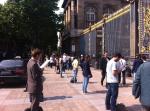
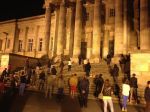
I Veilleurs Debout in pochi giorni si sono moltiplicati fino a diventare migliaia, si danno appuntamento di fronte ai tribunali e ai municipi di tutta la Francia, non fanno rumore, non urlano nulla, alcuni con un libro, altri con un volantino in mano, con qualsiasi condizione atmosferica di giorno e di notte; spontaneamente arrivano si fermano, si danno il cambio e c’è sempre qualcuno che porta agli altri qualcosa da bere o da mangiare.
Dopo le le manifestazioni organizzate dal comitato apolitico e aconfessionale, La Manif pour tous che hanno registrato più di un milione di partecipanti e il rifiuto da parte di molti sindaci di celebrare i matrimoni omosessuali, quella dei Veilluers è l’ultima nata tra le forme di dissenso ad una legge che ha già spaccato la Francia, voluta fortemente da un Hollande che, a un anno dalla sua elezione, nei recenti sondaggi si conferma essere il presidente più impopolare della repubblica francese.
I Veilleurs Debout su facebook e su twitter
Veilleurs Debout VIDEO



Quella dei Veilleurs Debout (letteralmente Vigilanti in piedi) è una nuova forma di resistenza pacifica del movimento francese nato in opposizione alla legge Taubira (Le marriage pour tous) e agli eccessi della polizia a nel soffocare ogni forma di dissenso ai matrimoni omosessuali.
Organizzata inizialmente per chiedere la liberazione del giovane Nicolas, condannato a quattro mesi di reclusione e incarcerato a Fleury-Mérogis , questa forma di protesta nasce spontaneamente il 25 giugno scorso a place Vendôme a Parigi, di fronte al Ministero della Giustizia: decine di uomini e donne di tutte le età si fermano immobili silenziosi a distanza di due metri l’uno dall’altro con il solo scopo di attirare l’attenzione.


I Veilleurs Debout in pochi giorni si sono moltiplicati fino a diventare migliaia, si danno appuntamento di fronte ai tribunali e ai municipi di tutta la Francia, non fanno rumore, non urlano nulla, alcuni con un libro, altri con un volantino in mano, con qualsiasi condizione atmosferica di giorno e di notte; spontaneamente arrivano si fermano, si danno il cambio e c’è sempre qualcuno che porta agli altri qualcosa da bere o da mangiare.

Dopo le le manifestazioni organizzate dal comitato apolitico e aconfessionale, La Manif pour tous che hanno registrato più di un milione di partecipanti e il rifiuto da parte di molti sindaci di celebrare i matrimoni omosessuali, quella dei Veilluers è l’ultima nata tra le forme di dissenso ad una legge che ha già spaccato la Francia, voluta fortemente da un Hollande che, a un anno dalla sua elezione, nei recenti sondaggi si conferma essere il presidente più impopolare della repubblica francese.
I Veilleurs Debout su facebook e su twitter
Veilleurs Debout VIDEO

sabato, luglio 27, 2013
Score! 13 of the World’s Coolest & Craziest Stadiums »
Score! 13 of the World’s Coolest & Craziest Stadiums »:
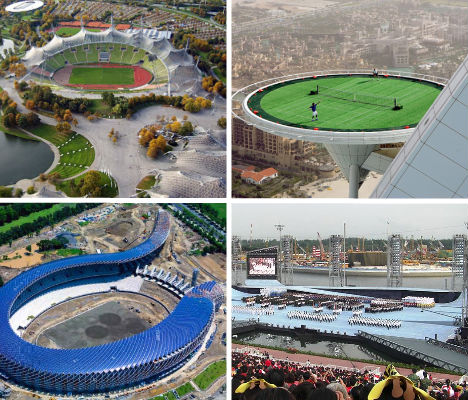
They host some of the world’s most exciting events and are often among the most massive structures in any given city – so why are stadiums themselves usually bland and boring? These 13 stadium designs shake things up with unexpected architectural details, surprising shapes and breathtaking surroundings from cliffs overlooking the city to helipads hovering hundreds of feet above the ground.
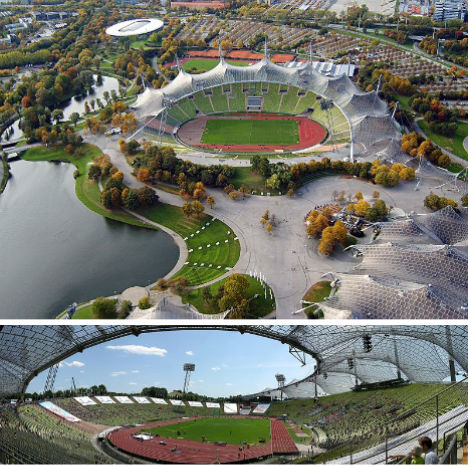
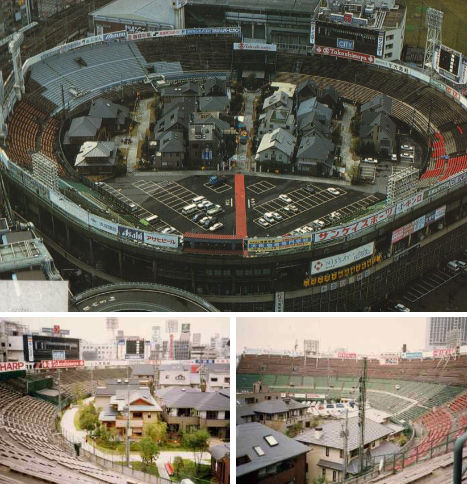
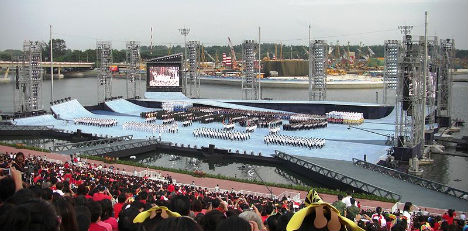
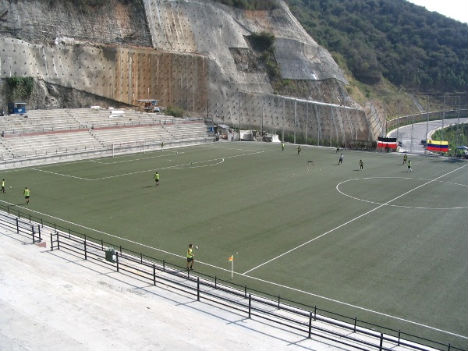
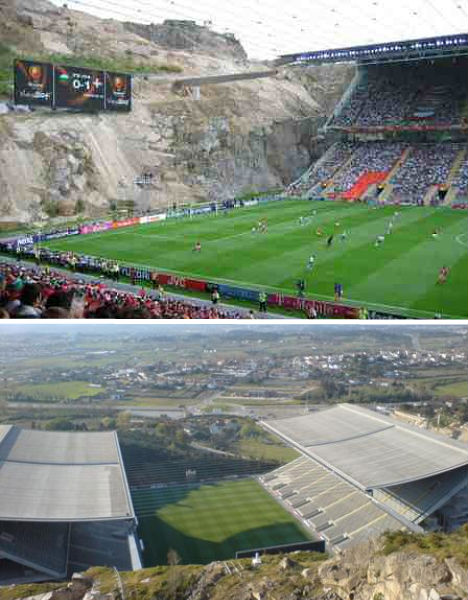
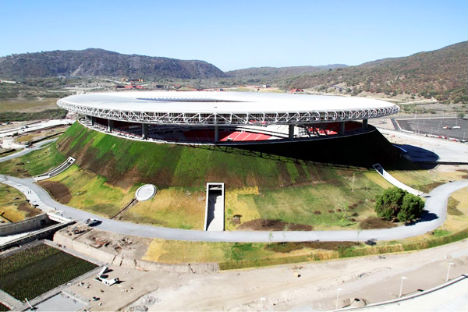
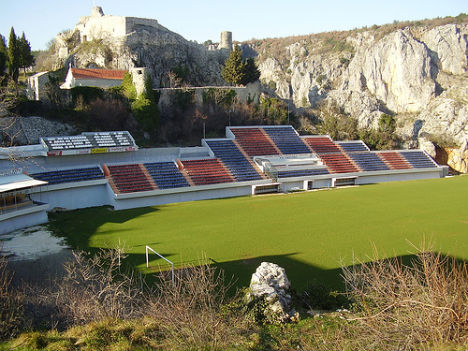
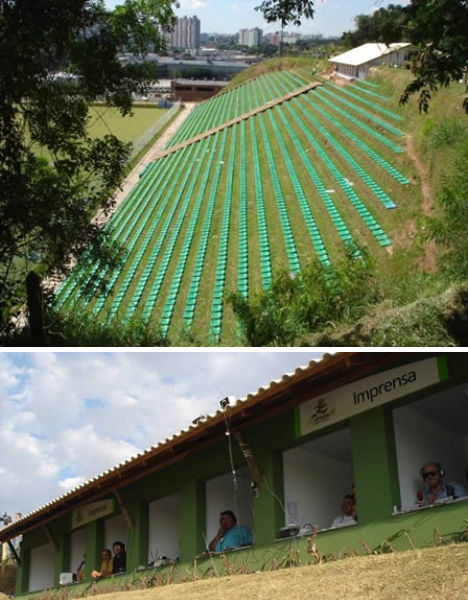
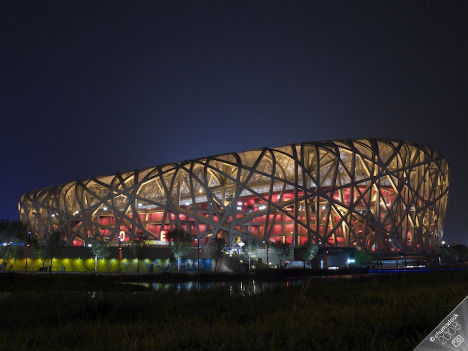
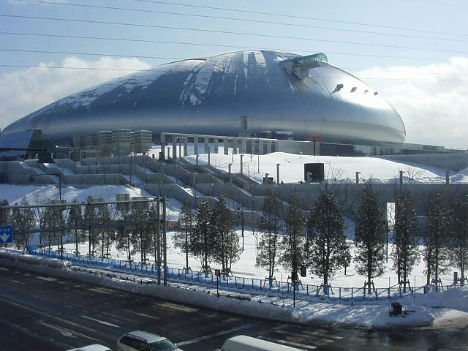

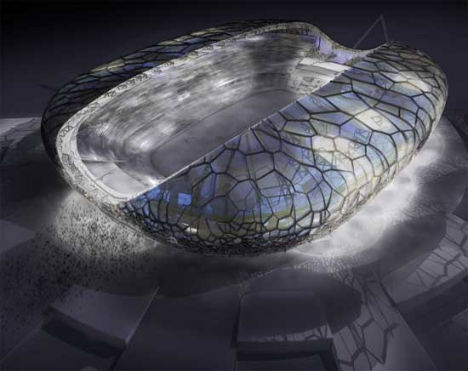


They host some of the world’s most exciting events and are often among the most massive structures in any given city – so why are stadiums themselves usually bland and boring? These 13 stadium designs shake things up with unexpected architectural details, surprising shapes and breathtaking surroundings from cliffs overlooking the city to helipads hovering hundreds of feet above the ground.
Munich Olympic Park

(images via: wikimedia commons)
From above, it looks alien, a massive metallic shell-like structure gleaming in the sunlight. The stadium at Germany’s Munich Olympic Park is made from stainless steel and acrylic and is the only stadium in the world to have hosted the Olympics, the World Cup Final and the European soccer championships final.Osaka Stadium, Japan

(image via: mellowmonk + fudoki)
Sure, there are some baseball fans that are so obsessed with the sport that living in a stadium would be a dream come true. But what about an entire neighborhood? Built in 1950 for Japan’s Nankai Hawks baseball team, Osaka Stadium was an entirely ordinary sports venue for nearly forty years – until the team moved to a new stadium. The abandoned Osaka Stadium was used to hold model housing for several years before it was demolished in 1998.The Float at Marina Bay, Singapore

(images via: wikipedia)
The world’s largest floating stage can hold the weight of 9,000 people, 200 tons of stage props and three 300-ton military vehicles. And that’s just the platform itself; the adjacent stands hold 30,000 spectators. ‘The Float at Marina Bay’ is on the waters of the Marina Reservoir in Singapore and is used not just for sports but also concerts, exhibitions, art performances and the National Day Parade.Cocodrilos Sports Park, Venezuela

(images via: soccerway.com)
At the Cocodrilos Sports Park in Caracas, Venezuela, you could be forgiven for getting distracted from the soccer match by the eye-catching architecture of the stadium itself. Situated next to a mountainside, the stadium is walled in with concrete plates that give it a highly unusual look.Braga, Portugal

(image via: sport.co.uk)
Even more beautiful is Portugal’s Braga stadium, carved into a granite quarry overlooking the city of Braga. At one end of the stadium is the dramatic rocky wall of the quarry and at the other end is an open vista of the city below. Braga is one of Europe’s most expensive stadiums, its price tag of €83.1 million coming mostly from the costly rock-moving process required to build it.Volcano-Like Stadum: Estadio Chivas, Mexico

(image via: inhabitat)
Like a ring of smoke from an erupting volcano, the white membrane of the Estadio Chivas stadium in Guadalajara, Mexico rises from a sloped opening in the ground. That’s no mistake – architects Jean Marie Massaud and Daniel Pouzet looked to the surrounding landscape for inspiration. Parking is hidden under the hill and when it’s not in use, the stadium itself is used as public recreation space.Gospin Dolac, Croatia

(images via: wikimedia commons)
When it comes to sports stadiums, does it get any more picturesque than this? Gospic Dolac is home to the NK Imotski football club in Croatia and the 4,000 spectators that its bleachers hold get stunning views of nearby medieval ruins, the hillside and the Blue Lake.Janguito Malucelli, Brazil

(images via: jmalucellifutebol.com.br)
At Brazil’s first eco-friendly stadium, you won’t be sitting on hard metal bleachers, but rather seats embedded in the grassy hillside. All of the wood used in the stadium was reclaimed to prevent deforestation, and not a drop of concrete was used in the stadium’s construction.Beijing National Stadium, China

(images via: wikipedia)
It was the iconic image of the 2008 Summer Olympics in Beijing – a stunning design that originated from the study of Chinese ceramics, and one that was unlike any other stadium in the world. The Beijing National Stadium, or Bird’s Nest as it’s commonly known, has a distinctive asymmetrical design made with crisscrossed steel beams.Sapporo Dome, Japan

(images via: wikipedia)
Sapporo, Japan gets so much snow every year that engineers faced a dilemma in designing a stadium for the city: how could they ensure that the grass playing field would get enough sunlight without using a retractable roof, which may not hold up to 20 feet of frozen precipitation? Their solution was 8,300-ton field that slides in and out of the flying saucer-like stadium, allowing it access to fresh air and sunlight on nice days. This moving field also enables the stadium to switch between baseball and soccer.Solar Stadium, Taiwan

(image via: inhabitat)
Like the scales of a reptile, 8,844 solar panels cover the new stadium in Taiwan. It’s a fitting facade for a dragon-shaped arena, which generates 100% of its own power and is located on a tract of undeveloped land that is also home to public green spaces and an ecological pond.Sochi Olympic Stadium, Russia

(images via: dvice)
If all goes according to plan (and the economy doesn’t take yet another architectural victim), Russia will get an incredible new stadium for the 2014 Olympics. Sochi Olympic Stadium will feature a translucent, all-glass exterior inspired by both its coastal location and mountainous backdrop. Construction has not yet begun, but the stadium is due to be completed in 2012.Burj Al Arab Hotel Helipad, Dubai

(image via: greenroofs.com)
When photos of a sky-high tennis match appeared online, many people assumed they were a hoax. It does look too bizarre to be true – not to mention unsafe – but the photos in question are in fact real. The Burj Al Arab skyscraper in Dubai converted its helipad to a tennis court and held a match between Roger Federer and Andre Agassi in preparation for the 2005 Dubai Championships.giovedì, luglio 25, 2013
Very informal fallacies »
Very informal fallacies »:  Logic students sometimes misremember or misspell the names of fallacies. One danger this poses is that it can inspire bored logic teachers to take a break from grading exams and write up ill-considered “humor” pieces. And so, in this blog’s proud tradition of rollicking comedy, here are some fallacies you’ve never heard of (though I bet you’ve committed a few of ‘em):
Logic students sometimes misremember or misspell the names of fallacies. One danger this poses is that it can inspire bored logic teachers to take a break from grading exams and write up ill-considered “humor” pieces. And so, in this blog’s proud tradition of rollicking comedy, here are some fallacies you’ve never heard of (though I bet you’ve committed a few of ‘em):

 Logic students sometimes misremember or misspell the names of fallacies. One danger this poses is that it can inspire bored logic teachers to take a break from grading exams and write up ill-considered “humor” pieces. And so, in this blog’s proud tradition of rollicking comedy, here are some fallacies you’ve never heard of (though I bet you’ve committed a few of ‘em):
Logic students sometimes misremember or misspell the names of fallacies. One danger this poses is that it can inspire bored logic teachers to take a break from grading exams and write up ill-considered “humor” pieces. And so, in this blog’s proud tradition of rollicking comedy, here are some fallacies you’ve never heard of (though I bet you’ve committed a few of ‘em):Post doc, ergo propter doc: The delusion that a Ph.D. confers wisdom, or even basic competence. Example: “Of course the medievals thought the earth was flat. It says so in the book! Who’s the professor here, anyway?”
Red hair-ing: Believing that something is true simply because a really hot redhead said it. Example: “Omigosh, Christina Hendricks is so hot. I would totally believe anything she says.”
Appeal to minority: The smug presumption that popular opinion, tradition, and plain common sense are always likely to be wrong. Often committed in conjunction with the Post doc fallacy. Example: “Of course, this goes against everything your parents, your pastor, and pretty much everyone else have always believed. So it must be true!”
Question the begging: Knee-jerk tendency to think that panhandlers, hard-up relatives, government employees, etc. are only going to blow any money you give them on booze and cigarettes. Not really a fallacy at all. Example: “I don’t care if he’s a legless veteran with five children and rickets! Didn’t you see that iPod?”
Democratic fallacy: Being a member of the Democratic Party and/or voting for Democratic Party candidates. Example: “I intend to vote Democrat this year.”
Affirming the consequences: Assuming that consequences are all that matter in morality. Also known as “consequentialism,” and often mistaken for an actual moral theory. Example: Pick any random sentence from a Peter Singer book.
Ad Eminem: Paranoid suspicion among some readers of right-wing blogs that absolutely everything about modern culture leads inexorably to rap music, pornography, and women wearing slacks. Example: “Did you read Feser’s blog post defending jazz?! Next he’ll be linking to YouTube clips from The Marshall Mathers LP!”
sabato, luglio 20, 2013
Debate: Capitalism vs Distributism
Debate: Capitalism vs Distributism:
“More and more, I find Catholics dividing themselves into capitalist and distributist camps,” writes Bernardo Aparicio García, president of the Catholic journal Dappled Things. To help readers establish “a firm foundation” for thinking about economic questions, García opened up the pages of his journal to Robert T. Miller, for capitalism, and John C. Médaille, for distributism. The result is a lengthy exchange “On Truth and Trade: Economics and the Catholic Vision of the Good Life.”
Read more on Debate: Capitalism vs Distributism…

“More and more, I find Catholics dividing themselves into capitalist and distributist camps,” writes Bernardo Aparicio García, president of the Catholic journal Dappled Things. To help readers establish “a firm foundation” for thinking about economic questions, García opened up the pages of his journal to Robert T. Miller, for capitalism, and John C. Médaille, for distributism. The result is a lengthy exchange “On Truth and Trade: Economics and the Catholic Vision of the Good Life.”
Read more on Debate: Capitalism vs Distributism…
giovedì, luglio 18, 2013
Botel: Floating Hotel with Modular Detachable Room Boats
Botel: Floating Hotel with Modular Detachable Room Boats: [ By WebUrbanist in Boutique & Art Hotels & Global. ]

You may have to move rooms when you arrive at your hotel, but has your room ever had to move you? Instead of static spaces, the sleeping areas in this hotel are dynamic vehicles you can use to depart the core structure in which you are staying.

Ivan Filipovic‘s idea is to let people in different physical contexts to do everything from exploring remote surroundings (in regions difficult to reach by land, for instance) to watching races or other city-side events (in more urban contexts).

The core structure provides all of the expected amenities, including a reservations desks, restaurant, cafe, bar, nightclub, rooftop terrace and swimming pool, but the autonomous room modules are equipped with solar power collectors and global positioning systems to allow them to depart and return on demand.
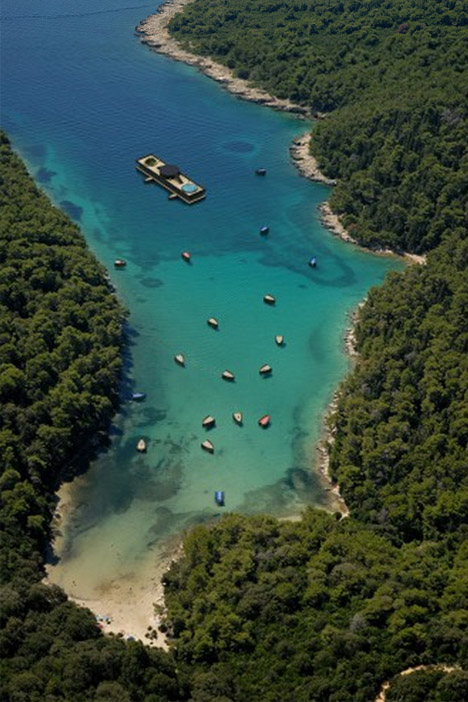
Whether they can be realized in a practical way is up for debate, but the concept is exceedingly convincing from an experiential perspective. The solution is a best-of-both-worlds hybrid of adventurous semi-independent world tours and luxury scripted cruise-ship expeditions.






[ By WebUrbanist in Boutique & Art Hotels & Global. ]
[ WebUrbanist | Archives | Galleries | Privacy | TOS ]





You may have to move rooms when you arrive at your hotel, but has your room ever had to move you? Instead of static spaces, the sleeping areas in this hotel are dynamic vehicles you can use to depart the core structure in which you are staying.

Ivan Filipovic‘s idea is to let people in different physical contexts to do everything from exploring remote surroundings (in regions difficult to reach by land, for instance) to watching races or other city-side events (in more urban contexts).

The core structure provides all of the expected amenities, including a reservations desks, restaurant, cafe, bar, nightclub, rooftop terrace and swimming pool, but the autonomous room modules are equipped with solar power collectors and global positioning systems to allow them to depart and return on demand.

Whether they can be realized in a practical way is up for debate, but the concept is exceedingly convincing from an experiential perspective. The solution is a best-of-both-worlds hybrid of adventurous semi-independent world tours and luxury scripted cruise-ship expeditions.




[ By WebUrbanist in Boutique & Art Hotels & Global. ]
[ WebUrbanist | Archives | Galleries | Privacy | TOS ]
martedì, luglio 16, 2013
Requiem per la destra [La giornata]
Requiem per la destra [La giornata]:
 Mai così marginale, ininfluente, inafferrabile dal secondo Dopoguerra a oggi. Così si offre la destra italiana allo sguardo di chi voglia misurarne il battito cardiaco dopo le elezioni politiche del febbraio scorso. Malgrado alcuni recenti, non disprezzabili tentativi di dilatarne la rappresentazione includendovi la ventennale vicenda berlusconiana (vedi Antonio Polito nel suo “In fondo a destra”, Rizzoli), la destra qui presa in esame è quella post fascista nelle sue più sottili ramificazioni, secondo la filiera che dal Movimento sociale italiano ha via via generato: Alleanza nazionale (1995-2008), un terzo del Pdl guidato da Gianfranco Fini (2008-2012), la Destra di Francesco Storace (2007) e Fratelli d’Italia (2012).
Mai così marginale, ininfluente, inafferrabile dal secondo Dopoguerra a oggi. Così si offre la destra italiana allo sguardo di chi voglia misurarne il battito cardiaco dopo le elezioni politiche del febbraio scorso. Malgrado alcuni recenti, non disprezzabili tentativi di dilatarne la rappresentazione includendovi la ventennale vicenda berlusconiana (vedi Antonio Polito nel suo “In fondo a destra”, Rizzoli), la destra qui presa in esame è quella post fascista nelle sue più sottili ramificazioni, secondo la filiera che dal Movimento sociale italiano ha via via generato: Alleanza nazionale (1995-2008), un terzo del Pdl guidato da Gianfranco Fini (2008-2012), la Destra di Francesco Storace (2007) e Fratelli d’Italia (2012).
Continua sul sito del Foglio.it

 Mai così marginale, ininfluente, inafferrabile dal secondo Dopoguerra a oggi. Così si offre la destra italiana allo sguardo di chi voglia misurarne il battito cardiaco dopo le elezioni politiche del febbraio scorso. Malgrado alcuni recenti, non disprezzabili tentativi di dilatarne la rappresentazione includendovi la ventennale vicenda berlusconiana (vedi Antonio Polito nel suo “In fondo a destra”, Rizzoli), la destra qui presa in esame è quella post fascista nelle sue più sottili ramificazioni, secondo la filiera che dal Movimento sociale italiano ha via via generato: Alleanza nazionale (1995-2008), un terzo del Pdl guidato da Gianfranco Fini (2008-2012), la Destra di Francesco Storace (2007) e Fratelli d’Italia (2012).
Mai così marginale, ininfluente, inafferrabile dal secondo Dopoguerra a oggi. Così si offre la destra italiana allo sguardo di chi voglia misurarne il battito cardiaco dopo le elezioni politiche del febbraio scorso. Malgrado alcuni recenti, non disprezzabili tentativi di dilatarne la rappresentazione includendovi la ventennale vicenda berlusconiana (vedi Antonio Polito nel suo “In fondo a destra”, Rizzoli), la destra qui presa in esame è quella post fascista nelle sue più sottili ramificazioni, secondo la filiera che dal Movimento sociale italiano ha via via generato: Alleanza nazionale (1995-2008), un terzo del Pdl guidato da Gianfranco Fini (2008-2012), la Destra di Francesco Storace (2007) e Fratelli d’Italia (2012).Continua sul sito del Foglio.it
domenica, luglio 14, 2013
Cardinal Newman archive to become digital library
Cardinal Newman archive to become digital library: The University of Manchester
22 May 2013
http://www.manchester.ac.uk/aboutus/news/display/?id=10076
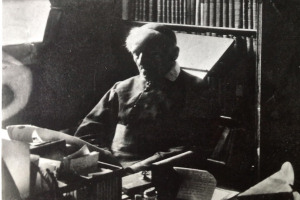
22 May 2013
http://www.manchester.ac.uk/aboutus/news/display/?id=10076
A three-year project to digitise the tens of thousands of documents produced by one of the most important and prolific Christian thinkers of the past 200 years has been launched.

John Henry Cardinal Newman's enormous handwritten archive, kept at the Birmingham Oratory, will be captured by a team of experts using cutting edge equipment at The University of Manchester's John Rylands Library.
The documents, thought to number around 200,000, will then be re-housed at the Birmingham Oratory in custom made boxes, made by the collection care team at Rylands.
US-based National Institute for Newman Studies initiated the groundwork for the project over ten years ago.
It is now funding and managing the £386,000 digitization, which will transform the archive into a comprehensive digital library that will eventually include all of Newman’s published and unpublished works.
Newman, who died in 1890 aged 89, was an academic and a clergyman in the Church of England before he converted to Catholicism.
Then, as a Catholic priest his influence increased still further and continues to this day. Pope Leo XIII made him a Cardinal in 1879.
In 2010, he was beatified by Pope Benedict XVI, the final stage before being declared a saint.
Newman was a prolific writer, exchanging letters with the public, leading figures, and even prime ministers. His books and essays are read across the world.
He joined the Roman Catholic Church in 1845, and pursued a life of study and prayer, mainly in the Catholic parish of the Birmingham Oratory.
Father Ignatius Harrison, the Provost of the Birmingham Oratory, said: "Cardinal Newman is a towering figure of Christian thought, and has had an enduring influence on modern Western intellectual life.
"His long life of ministry and scholarship left a deep mark on the national consciousness of Britain, transforming its ecclesial, devotional, intellectual, and popular identities in ways we are still only beginning to understand.
"Through his prolific and widely influential writings and his example of practical holiness, Newman also left a deep and lasting impression on the non-English-speaking world.
"So this hugely important collection provides a unique record of an influential churchman who is one of the most important voices in recent western European thought."
Mary Jo Dorsey from the National Institute for Newman Studies said: "Our prime aim is to enhance and extend the reach of Newman's life, thought, and spirituality.
"An important goal of the Digital Library is to not only preserve and extend the Newman Archive to scholars around the globe, but to build a multidimensional research tool for the humanities.
"So we are delighted that the project will bring his teachings to the community of Newman scholars as well as to today's pluralistic, diverse society.
"A robust Digital Library and research platform created by our Pittsburgh colleague Crivella West, will be a full-text anthology of Newman's letters, diaries, manuscripts, and documents saved by the Cardinal.
Jamie Robinson, is a Senior Photographer at The John Rylands Library's Centre for Heritage Imaging and Collection Care.
He said: "We’re delighted to be working with NINS and the Oratory on this prestigious project which will provide a wonderful research resource for scholars and students with an interest in nineteenth century studies.
“This is an enormous task, requiring two extra full time staff to cope with the workload – but one which we will relish.
"We are one of the few services in the UK to provide specialist digitisation and collection care of heritage and cultural collections so this commission is a perfect match with our expertise.
"No other organisation in the north of England specialises in the bespoke digitisation and collection care of heritage materials."
The documents, thought to number around 200,000, will then be re-housed at the Birmingham Oratory in custom made boxes, made by the collection care team at Rylands.
US-based National Institute for Newman Studies initiated the groundwork for the project over ten years ago.
It is now funding and managing the £386,000 digitization, which will transform the archive into a comprehensive digital library that will eventually include all of Newman’s published and unpublished works.
Newman, who died in 1890 aged 89, was an academic and a clergyman in the Church of England before he converted to Catholicism.
Then, as a Catholic priest his influence increased still further and continues to this day. Pope Leo XIII made him a Cardinal in 1879.
In 2010, he was beatified by Pope Benedict XVI, the final stage before being declared a saint.
Newman was a prolific writer, exchanging letters with the public, leading figures, and even prime ministers. His books and essays are read across the world.
He joined the Roman Catholic Church in 1845, and pursued a life of study and prayer, mainly in the Catholic parish of the Birmingham Oratory.
Father Ignatius Harrison, the Provost of the Birmingham Oratory, said: "Cardinal Newman is a towering figure of Christian thought, and has had an enduring influence on modern Western intellectual life.
"His long life of ministry and scholarship left a deep mark on the national consciousness of Britain, transforming its ecclesial, devotional, intellectual, and popular identities in ways we are still only beginning to understand.
"Through his prolific and widely influential writings and his example of practical holiness, Newman also left a deep and lasting impression on the non-English-speaking world.
"So this hugely important collection provides a unique record of an influential churchman who is one of the most important voices in recent western European thought."
Mary Jo Dorsey from the National Institute for Newman Studies said: "Our prime aim is to enhance and extend the reach of Newman's life, thought, and spirituality.
"An important goal of the Digital Library is to not only preserve and extend the Newman Archive to scholars around the globe, but to build a multidimensional research tool for the humanities.
"So we are delighted that the project will bring his teachings to the community of Newman scholars as well as to today's pluralistic, diverse society.
"A robust Digital Library and research platform created by our Pittsburgh colleague Crivella West, will be a full-text anthology of Newman's letters, diaries, manuscripts, and documents saved by the Cardinal.
Jamie Robinson, is a Senior Photographer at The John Rylands Library's Centre for Heritage Imaging and Collection Care.
He said: "We’re delighted to be working with NINS and the Oratory on this prestigious project which will provide a wonderful research resource for scholars and students with an interest in nineteenth century studies.
“This is an enormous task, requiring two extra full time staff to cope with the workload – but one which we will relish.
"We are one of the few services in the UK to provide specialist digitisation and collection care of heritage and cultural collections so this commission is a perfect match with our expertise.
"No other organisation in the north of England specialises in the bespoke digitisation and collection care of heritage materials."
Notes for editors
Follow the progress of the project on www.newmanarchive.wordpress.com.
Located in Pittsburgh, Pennsylvania, USA, NINS, affiliated with Duquesne University, serves as the definitive resource of information on the Blessed John Henry Cardinal Newman.
Kevin Mongrain, Executive Director of NINS, Mary Jo Dorsey Knowledge Manager at NINS, Fr Ignatius Harrison from the Birmingham Oratory, and James Robinson from the John Rylands Library are available for comment.
Images are available
For media enquiries contact: Mike Addelman
Press Officer
Faculty of Humanities
The University of Manchester
0161 275 0790
07717 881567
Michael.addelman@manchester.ac.uk
Located in Pittsburgh, Pennsylvania, USA, NINS, affiliated with Duquesne University, serves as the definitive resource of information on the Blessed John Henry Cardinal Newman.
Kevin Mongrain, Executive Director of NINS, Mary Jo Dorsey Knowledge Manager at NINS, Fr Ignatius Harrison from the Birmingham Oratory, and James Robinson from the John Rylands Library are available for comment.
Images are available
For media enquiries contact: Mike Addelman
Press Officer
Faculty of Humanities
The University of Manchester
0161 275 0790
07717 881567
Michael.addelman@manchester.ac.uk
sabato, luglio 13, 2013
In libreria “Paolo e le parole di Gesù. Frammenti di un insegnamento orale” »
Luigi WALT, Paolo e le parole di Gesù. Frammenti di un insegnamento orale, Morcelliana, Brescia 2013, pp. 520, euro 35.
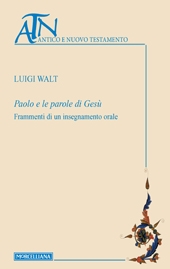
L’indagine storica sul cristianesimo delle origini, soprattutto a partire dal Novecento, ha sostenuto in diverse occasioni l’ipotesi di una radicale discontinuità fra Gesù e Paolo. Ancora oggi, gli studiosi si interrogano su quanto del messaggio originario di Gesù si sia conservato nella predicazione paolina, e quanto debba essere valutato, invece, come il frutto delle personali elaborazioni dell’apostolo, preoccupandosi principalmente di individuare gli «elementi paolini in Paolo», senza considerare l’importanza di ciò che renderebbe l’apostolo meno originale ai nostri occhi: la sua eventuale dipendenza da elementi «pre-paolini», e, nello specifico, dalla multiforme tradizione delle parole di Gesù.
Paolo si trova ad agire in una particolare fase storica delle origini cristiane, corrispondente agli anni 30-70 del primo secolo, in cui mancano, o risultano ancora marginali, fissazioni scritte dell’annuncio evangelico. Di qui le domande: quale peso ebbe, nella predicazione orale di Paolo, il richiamo concreto alle parole di Gesù? In quante e quali occasioni, e in che modo l’apostolo si trovò a citare insegnamenti attribuiti o attribuibili al Nazareno? Quale rapporto possiamo stabilire tra gli scritti di Paolo che ci sono rimasti e la complessa storia delle tradizioni evangeliche, confluite in seguito nei vari testi della letteratura canonica e «apocrifa»?
Attraverso un’analisi dettagliata dell’epistolario paolino, il libro cerca di dare risposta a questi interrogativi, restituendoci un’immagine vivida, e a tratti inedita, del vangelo predicato dall’apostolo e del suo «debito impensato» con Gesù.
Paolo si trova ad agire in una particolare fase storica delle origini cristiane, corrispondente agli anni 30-70 del primo secolo, in cui mancano, o risultano ancora marginali, fissazioni scritte dell’annuncio evangelico. Di qui le domande: quale peso ebbe, nella predicazione orale di Paolo, il richiamo concreto alle parole di Gesù? In quante e quali occasioni, e in che modo l’apostolo si trovò a citare insegnamenti attribuiti o attribuibili al Nazareno? Quale rapporto possiamo stabilire tra gli scritti di Paolo che ci sono rimasti e la complessa storia delle tradizioni evangeliche, confluite in seguito nei vari testi della letteratura canonica e «apocrifa»?
Attraverso un’analisi dettagliata dell’epistolario paolino, il libro cerca di dare risposta a questi interrogativi, restituendoci un’immagine vivida, e a tratti inedita, del vangelo predicato dall’apostolo e del suo «debito impensato» con Gesù.
Archiviato in:Scaffale aperto
Iscriviti a:
Post (Atom)





